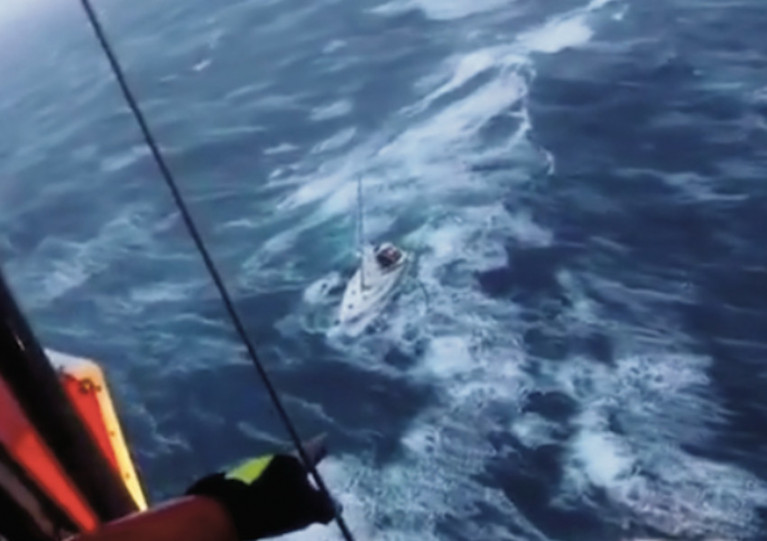Displaying items by tag: Loa Zour
Seafarers Reminded of Importance of Passage Planning Following Report on ‘Loa Zour’ Rescue
The latest Marine Notice from the Department of Transport reminds seafarers of the important of passage planning and regular weather forecast checks during voyages.
It comes following the recommendations in the Marine Casualty Investigation Board (MCIB) report into the rescue of five sailors from the yacht Loa Zour amid severe storm conditions off the Spanish coast in June 2019.
As previously reported on Afloat.ie, a crew from Kinsale Yacht Club were rescued from the 40ft yacht on 6 June 2019 just days after they had set out from West Cork for the Spanish port of A Coruña, after experiencing extreme conditions amid the surprise Storm Miguel.
The MCIB report found that while the storm was “an unusual and unexpected weather event”, and the skipper of the Loa Our “showed good judgement in his decision and actions in broadcasting a Mayday distress VHF transmission and activating the vessel’s EPIRB”, he was also unaware of the details of the Code of Practice for the Safe Operation of Recreational Craft and the requirement to submit a passage plan to a shore-based authority.
“If the basic tenets of the passage plan had been observed in detail with respect to updated weather forecasting during the voyage, observing the limitations of the boat design capability and staying within reach of a safe haven by taking a more circuitous route around the coastline of the Bay of Biscay, then the crew of yacht Loa Zour may have been better prepared before encountering Storm Miguel 85 [nautical miles] north of A Coruña,” the report states.
Marine Notice No 19 of 2021 highlights the relevant advice contained within the Code of Practice and related Marine Notices, and can be downloaded below.





























































